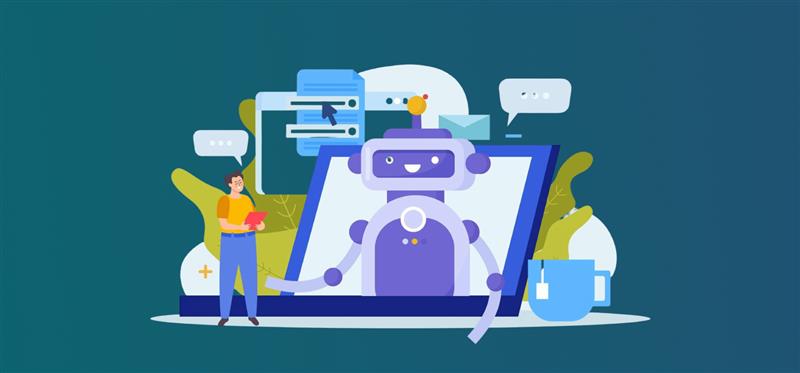How RPA is Revolutionizing Customer Service in 2025?
In 2025, customer service is undergoing profound changes, fueled by the rapid adoption of Robotic Process Automation (RPA). As businesses strive to meet escalating customer expectations for speed, accuracy, and personalization, RPA in customer service has emerged as a cornerstone of technology.
“79% of businesses consider automation essential to their customer experience strategy, underscoring RPA’s pivotal role in modern customer service.” — Kaizo
RPA uses software robots to automate repetitive, rule-based tasks, such as answering routine inquiries, processing transactions, and managing customer data. By handling these tasks, RPA enables companies to deliver faster, more accurate service while allowing human agents to focus on complex, empathy-driven interactions.
Let us explore how RPA in customer service is reshaping in 2025, supported by trends, statistics, and real-world examples.
What is RPA and How Does It Apply to Customer Service?
Robotic Process Automation (RPA) involves software robots, or “bots,” that mimic human actions to perform repetitive tasks within digital systems. Think of RPA as a digital assistant that tirelessly handles routine work, such as entering data or responding to standard customer queries, with unmatched speed and accuracy.
In customer service, RPA is applied in several key areas:
- Automated Responses: Bots can instantly answer common questions, like store hours or return policies, reducing customer wait times.
- Data Retrieval: RPA quickly gathers customer information from multiple systems, providing agents with comprehensive data to personalize interactions.
- Transaction Processing: Tasks like order processing, refunds, or subscription updates are automated, ensuring speed and accuracy.
- Ticket Management: RPA creates, updates, and closes support tickets, streamlining issue resolution.
By automating these processes, RPA enhances efficiency and allows human agents to focus on building relationships and solving complex problems, ultimately improving customer satisfaction.
Benefits of RPA in Customer Service
The integration of RPA into customer service offers a range of advantages that are transforming business operations. Here are the key benefits:
- Cost & Time Saving: Automating routine tasks reduces the need for large customer service teams, lowering labor costs, and by performing tasks quickly, it saves time as well.
For example, the bots saved a renowned company so much time that it was able to reduce back-office operations by 50%. — IBM Case Study
For another organization, the automation program saved $2.7 million annually. Other than this, 70,000 hours of labor were saved each year, allowing employees to focus on high-value tasks. — UiPath Case Study
- Increased Efficiency: RPA bots operate 24/7, handling high volumes of tasks simultaneously. This ensures faster response times, especially during peak periods like holidays.
- Improved Accuracy: Unlike humans, bots perform tasks without errors, ensuring data consistency and reducing costly mistakes in customer interactions.
- Enhanced Customer Experience: Faster responses and personalized service, enabled by quick data access, lead to higher customer satisfaction.
- Empowering Human Agents: By offloading repetitive tasks, RPA allows agents to focus on complex issues requiring empathy and creativity, boosting job satisfaction and service quality.
These benefits collectively enable businesses to deliver superior customer service while optimizing resources.
Trends in RPA for Customer Service in 2025
As we move through 2025, several trends are redefining the role of RPA in customer service:
- Integration with AI and Machine Learning: RPA is increasingly paired with artificial intelligence (AI) and machine learning (ML) to create intelligent automation. This enables bots to handle complex tasks, such as understanding natural language or predicting customer needs based on data analysis.
- Advanced Chatbots and Virtual Assistants: Powered by RPA and AI, chatbots are becoming more sophisticated, offering human-like interactions. They can handle diverse inquiries, from billing questions to technical support, enhancing customer engagement.
- Omnichannel Support: Customers expect consistent service across phone, email, social media, and live chat. RPA integrates these channels, ensuring seamless data flow and a unified customer experience.
- Hyperautomation: This trend combines RPA with technologies like AI, process mining, and analytics to automate entire workflows. In customer service, hyperautomation can streamline processes from initial contact to resolution with minimal human intervention.
These trends, supported by advancements in technology, are making RPA an indispensable tool for customer service innovation.

Challenges and Solutions
While RPA offers significant benefits, implementation can present challenges:
- Integration with Legacy Systems: Older systems may not easily integrate with RPA. Using platforms with robust integration capabilities or partnering with experts like SynapseIndia can address this.
- Change Management: Employees may resist automation. Comprehensive training and clear communication can ease the transition.
- Data Security: Handling sensitive customer data requires strong security measures, such as encryption and access controls.
- Scalability: As businesses grow, RPA solutions must scale. Choosing flexible platforms ensures long-term success.
Addressing these challenges proactively ensures that RPA delivers its full potential.
Future Scope of RPA in Customer Service
“The global robotic process automation market size was valued at USD 18.99 billion in 2024. The market is projected to grow from USD 26.10 billion in 2025 to USD 483.29 billion by 2034, exhibiting a CAGR of 38.3% from 2025 to 2034.” — Polaris Market Research, 2025
Looking beyond 2025, RPA’s role in customer service will continue to expand:
- Advanced Cognitive Capabilities: Integration with AI will enable bots to perform tasks like sentiment analysis and predictive service, anticipating customer needs.
- Greater Personalization: RPA will leverage customer data to deliver highly tailored interactions, enhancing loyalty.
“88% of customers say good customer service makes them more likely to purchase again.” — Salesforce Research, 2025
- Expansion into Front-Office Roles: Bots will take on more customer-facing tasks, such as complex query resolution.
- Enhanced Security: As data privacy concerns grow, RPA systems will incorporate advanced security features to protect customer information.
Why Choose SynapseIndia for RPA Development Services?
SynapseIndia delivers bespoke RPA solutions to streamline your customer service operations, combining cutting-edge technology with deep industry expertise. Our team designs and implements automation strategies that enhance efficiency, reduce costs, and improve customer satisfaction. With a proven track record of successful RPA deployments across diverse sectors, we ensure seamless integration with your existing systems and provide ongoing support to maximize ROI.
Partner with SynapseIndia to transform your customer service with innovative, scalable RPA solutions customized to your business needs.
Conclusion
In 2025, Robotic Process Automation is transforming customer service by driving efficiency, reducing costs, and enhancing customer satisfaction. From automating routine tasks to enabling personalized, omnichannel experiences, RPA is a strategic imperative for businesses aiming to thrive in a competitive market.
To unlock the full potential of RPA in customer service operations, connect with SynapseIndia today. Our team of experts is ready to deliver customized solutions that drive efficiency and customer loyalty, positioning your business for long-term success.

 contact
contact

 By
By 


